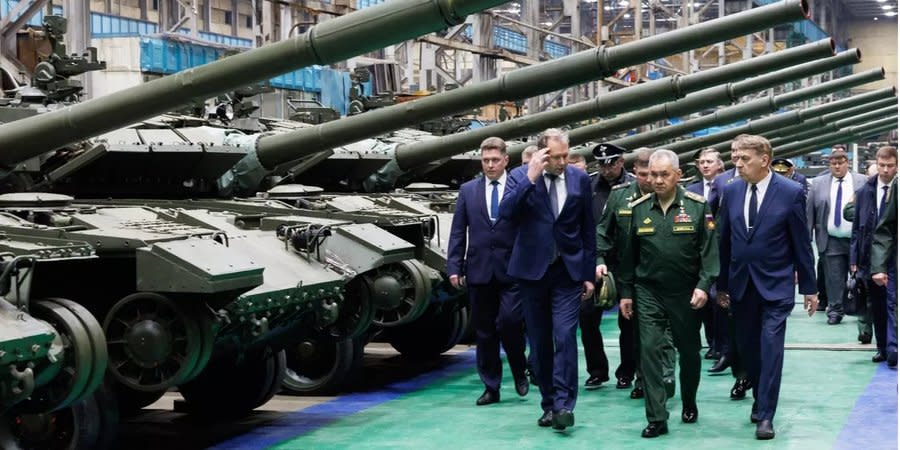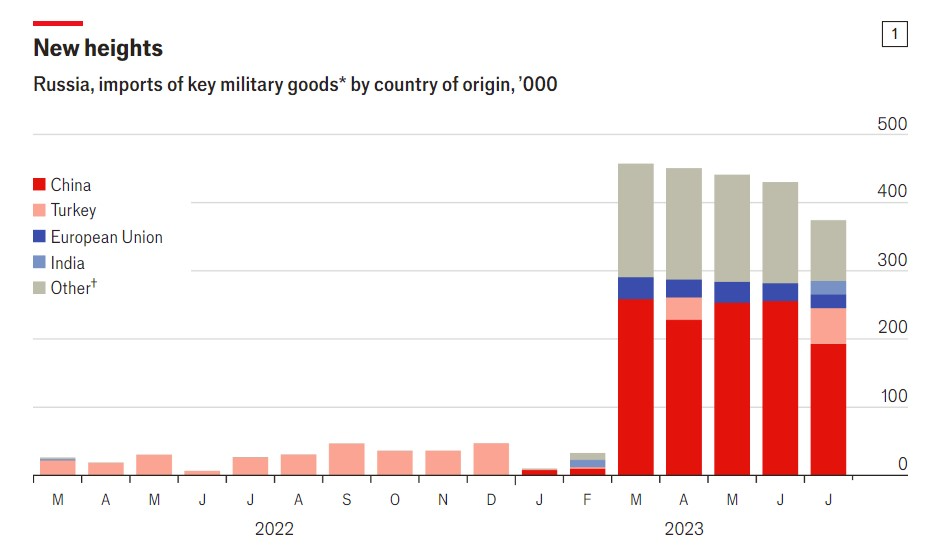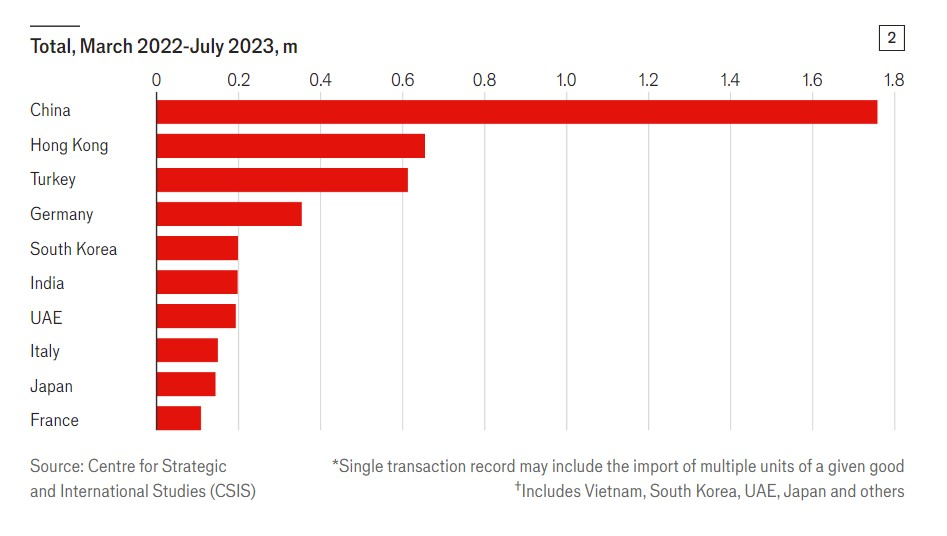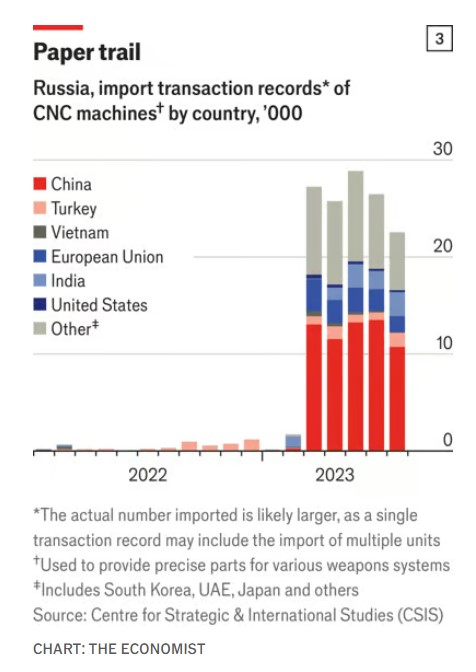Russia’s arms boom powered by Chinese supplies, despite Western embargoes

- Oops!Something went wrong.Please try again later.
Despite stringent Western sanctions, Russia's arms production is experiencing a significant boom, fueled largely by imports from China, The Economist reported on April 29. This surge in production is largely attributed to Russia's full-scale invasion of Ukraine, with a noticeable increase in the manufacturing of key weapons.
The Centre for Strategic and International Studies (CSIS) has analyzed trade data revealing that Russia's monthly output of long-range missiles more than doubled early in 2024 compared to February 2022, with most imports traceable back to Beijing. This includes critical parts, electronics, and tools funneled through a complex network of shell companies.

Chinese firms are also supplying Moscow with semiconductors essential for various weapon systems, alongside navigation gear, aircraft parts, and more ubiquitous items like ball bearings, which are integral to artillery and other military hardware.

An analysis by The Economist of transaction records indicates that precision manufacturing equipment, particularly computer numerical controlled (CNC) tools essential for crafting critical hardware, predominantly comes from China. Between March and July 2023, there were more than 10,000 transactions per month from China to Russia involving these tools, hinting at a much larger actual number of machines provided.

This influx of goods intensified after a partial mobilization announced by Russian President Vladimir Putin in September 2022, and significantly spiked following a March 2023 meeting between Chinese President Xi Jinping and Putin in Moscow. Despite Beijing's claims of neutrality, these exports underscore its substantial role in supporting the Kremlin's war efforts. U.S. Secretary of State Antony Blinken has labeled China as the “primary contributor” to Russia’s defense industrial base.
Despite the embargoes, Russia continued to receive Western-made components throughout 2023, with goods from France, Germany, and Japan reaching Russia through intermediaries like Turkey and the UAE, which have not agreed to Western sanctions. The Royal United Services Institute highlighted that one of Russia’s top microelectronics distributors, Compel JSC, imported vast amounts of Western microelectronics not only through Hong Kong but also Germany.
The challenge of enforcing stricter sanctions is compounded by Russia's shift to using lower-grade and dual-use civilian technology in its arms production, making it difficult to restrict these items in international supply chains.
Another complication is that Kyiv also depends partly on Chinese manufacturers for some machine parts. Anyone designing and enforcing Western sanctions has to consider whether imposing further restrictions on some Chinese firms may also impede Ukraine’s military procurement.
Despite these challenges, Russia's defense spending is projected to reach $115 billion in 2024, marking a 68% increase from 2023. However, the sustainability of Russia's arms production is questionable, as shortages in explosive materials and the depletion of Soviet-era stocks could lead to significant constraints within the next few years. In response, Western nations are focused on tightening existing sanctions and enhancing their own production capabilities to support Ukraine.
Read also:
We’re bringing the voice of Ukraine to the world. Support us with a one-time donation, or become a Patron!
Read the original article on The New Voice of Ukraine

